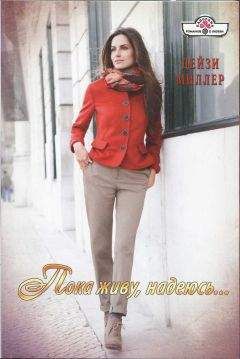Ричард Овери - Сталин и Гитлер
2. Uncensored Germany, pp. 69–73. See too B. Engelmann In Hitler’s Germany: Everyday Life in the Third Reich (London, 1988), p. 38. Engelmann estimated that between 10 and 18 per cent of his classmates at school were ‘real Nazis’.
3. See for example R. Gellately Backing Hitler: Consent and Coercion in Nazi Germany (Oxford, 2001); N. Frei ‘People’s Community and War: Hitler’s Popular Suppott’, in H. Mommsen (ed.) The Third Reich between Vision and Reality: New Perspectives on German History 1918–1945 (Oxford, 2001), pp. 59–74; D. Hoffmann Stalinist Values: the Cultural Norms of Soviet Modernity 1917–1941 (Ithaca, NY, 2003).
4. G. M. Ivanova Labor Camp Socialism: the Gulag in the Soviet Totalitarian System (New York, 2000), p. 51: a farmworker was found to have 850 grammes of rye concealed, and was sentenced by the Belgorod District Court to fi ve years in a camp in 1947. H. James ‘The Deutsche Bank and the Dictatorship 1933–1945’, in L. Gall et aL The Deutsche Bank, 1870–1945 (London, 1995), p. 350. The bank director Hermann Kohler was executed for saying that National Socialism was ‘nothing more than a fart’.
5. See I. Kershaw The ‘Hitler Myth’: Image and Reality in the Third Reich (Oxford, 1987), pp. 83–104; I. Kershaw ‘The Führer-Image and Political Integration: the Popular Conception of Hitler in Bavaria during the Third Reich’, in G. Hirschfeld and L. Kettenacker (eds) Der ‘Führerstaat’: Mythos and Realität (Stuttgart, 1981), pp. 133–60.
6. Engelmann, In Hitler’s Germany, p. vii.
7. A. Solzhenitsyn The Gulag Archipelago 1918–1956 (London, 1974), pp. 18–20.
8. See for example the political police reports in J. Schadt (ed.) Verfolgung und Widerstand unter dem Nationalsozialismus in Baden. Die Lageberichte der Gestapo und des Generalstaatsanwalts Karslruhe 1933–1940 (Stuttgart, 1976). These reports were structured to report any manifestations of hostility or non-compliance, but not evidence of complicity or enthusiasm.
9. J.-P. Depretto ‘L’opinion ouvriere (1928–1932)’, Revue des Etudes Slaves, 66 (1994), pp. 59.
10. For example Schadt, Verfolgung und Widerstand in Baden, p. 107, ‘Stand und Tätigkeit der staatsfeindlichen Betätigungen’, 4 October 1934.
11. D. Schmiechen-Ackermann Nationalsozialismus und Arbeitermilieus: Der nationalsozialistische Angriff auf die proletarischen Wohnquartiere und die Reaktion in den sozialistischen Vereinen (Bonn, 1998), p. 756.
12. L. Siegelbaum ‘Soviet Norms Determination in Theory and Practice 1917–1941’, Soviet Studies, 36 (1984), pp. 46–8; on worker legal protection in the 1920s see M. Ilic Women Workers in the Soviet Inter-War Economy: From ‘Protection’ to ‘Equality’ (London, 1999), pp. 46–52.
13. J.-P. Depretto Les Ouvriers en U.R.S.S. 1918–1941 (Paris, 1997), pp. 276–7; T. Szamuely ‘The Elimination of Opposition between the Sixteenth and Seventeenth Congresses of the CPSU’, Soviet Studies, 17 (1966), pp. 335–6; A. Graziosi A New, Peculiar State: Explorations in Soviet History 1917–1937 (Westport, Conn., 2000), pp. 179–83; J. B. Sorensen The Life and Death of Soviet Trade Unionism 1917–1918 (New York, 1969), pp. 245–53.
14. Graziosi, New, Peculiar State, pp. 190–91.
15. Graziosi, New, Peculiar State, pp. 192–4; D. Filtzer ‘Stalinism and the “Working Class in the 1930s’, in J. Channon (ed.) Politics, Society and Stalinism in the USSR (London, 1998), pp. 172–8; Szamuely, ‘Elimination of Opposition’, pp. 336–7; D. Filtzer Soviet Workers and Stalinist Industrialization: the Formation of Modern Soviet Production Relations 1918–1941 (London, 1986), pp. 107–15, 135–46.
16. V. Kravchenko I Chose Freedom: The Personal and Political Life of a Soviet Offi cial (London, 1947), pp. 311–15; L. E. Hubbard Soviet Labour and Industry (London, 1942), pp. 96–7.
17. J. Harrer ‘Gewerkschaftlicher Widerstand gegen das “Dritte Reich”’, in F. Deppe, G. Fülberth and J. Harrer (eds) Geschichte der deutschen Werkschaftsbewegung (4th edn, Cologne, 1989), pp. 349–56; S. Mielke and M. Frese (eds) Die Gewerkschaften im Widerstand und in der Emigration 1933–1945 (Frankfurt am Main, 1999), pp. 13–17; G. Mai’ “Warum steht der deutsche Arbeiter zu Hitler?” Zur Rolle der Deutschen Arbeitsfront im Herrschaftssystem des Dritten Reiches’, Geschichte und Gesellschaft, 13 (1987), pp. 215–17.
18. C. W. Guillebaud The Economic Recovery of Germany, 1933–1938 (London, 1939), pp. 110–11.
19. Harrer, ‘Gewerkschaftlicher Widerstand’, p. 344.
20. Harrer, ‘Gewerkschaftlicher Widerstand’, pp. 346–9; Mielcke and Frese, Gewerkschaften in Widerstand, pp. 13–16.
21. Harrer, ‘Gewerkschaftlicher Widerstand’, pp. 372–7; G. Beier Die illegale Reichsleitung der Gewerkschaften 1933–1945 (Cologne, 1981), pp. 41–3, 73.
22. A. Merson Communist Resistance in Nazi Germany (London, 1985), p. 182. The fi gure of 60,000 includes all those estimated to have been active after 1933. In January 1933 the party had 360,000 members.
23. Schadt, Verfolgung und Widerstand in Baden, pp. 106–9, ‘Lagebericht des Gestapa Karlsruhe’, 4 October 1934.
24. G. Plum ‘Die KPD in der Illegalität’, in H. Graml (ed.) Widerstand im Dritten Reich: Probleme, Ereignisse, Gestalten (Frankfurt am Main, 1994), pp. 167–70.
25. Harrer, ‘Gewerkschaftlicher Widerstand’, p. 369; K. H. Roth Facetten des Terrors: Der Geheimdienst der “Deutsche Arbeitsfront’ und die Zerstörung der Arbeiterbewegung 1933 bis 1938 (Bremen, 2000), pp. 36–8.
26. Roth, Facetten des Terrors, pp. 9–21; Harrer, ‘Gewerkschaftlicher Widerstand’, p. 370; G. Lotfi KZ der Gestapo: Arbeitserziehungslager im Dritten Reich (Stuttgart, 2000), pp. 25–42, 114–21.
27. Depretto, ‘L’opinion ouvriere’, pp. 53–8; E. Osokina Our Daily Bread: Socialist Distribution and the Art of Survival in Stalin’s Russia (New York, 2001), pp. 53–6.
28. Filtzer, ‘Stalinism and the Working Class’, pp. 168–9.
29. J. J. Rossman ‘The Teikovo Cotton Workers’ Strike of April 1932: Class, Gender and Identity Politics in Stalin’s Russia’, Russian Review, 56 (1997), p. 44.
30. Rossman, ‘Teikovo Cotton Workers’ Strike’, pp. 46–63; see too J. J. Rossman ‘A Workers’ Strike in Stalin’s Russia: the Vichuga Uprising of April 1932’, in L. Viola (ed.) Contending with Stalinism: Soviet Power and Popular Resistance in the 1930s (Ithaca, NY, 2002), pp. 44–80. This strike, too, was defeated by police repression, though it brought some economic alleviation.
31. See J. Falter and M. H. Kater ‘Wähler und Mitglieder der NSDAP’, Geschichte und Gesellschaft, 19 (1993), pp. 155–77.
32. Mielke and Frese, Gewerkschaften im Widerstand, pp. 13–15.
33. On the fate of the other socialist parties see V. N. Brovkin The Mensheviks after October: Socialist Opposition and the Rise of the Bolshevik Dictatorship (Ithaca, NY, 1987); V. N. Brovkin (ed.) The Bolsheviks in Russian Society: the Revolution and the Civil Wars (New Haven, Conn., 1997), esp. chs 2, 4 and 7; A. Liebich ‘The Mensheviks’, in A. Geifman (ed.) Russia under the Last Tsar: Opposition and Subversion 1894–1917 (Oxford, 1999), pp. 19–33.
34. R. Löhmann Der Stalinmythos: Studien zur Sozialgeschichte des Personenkultes in der Sowjetunion (Münster, 1990), p. 205; Depretto, Les Ouvriers en U.R.S.S., p. 367.
35. Löhmann, Stalinmythos, pp. 206–15; V. Andrle Workers in Stalin’s Russia: Industrialization and Social Change in a Planned Economy (New York, 1988), p. 35; Ilič, Women Workers, p. 185; Filtzer, Soviet Workers, pp. 57–65.
36. K. M. Strauss Factory and Community in Stalin’s Russia: the Making of an Industrial Working Class (Pittsburgh, 1997), pp. 23–4, 268–81.
37. H. Potthoff Freie Gewerkschaften 1918–1933: Der Allgemeine Deutsche Gewerkschaftsbund in der Weimarer Republik (Düsseldorf, 1987), p. 346.
38. W. Benz ‘Vom freiwilligen Arbeitsdienst zur Arbeitsdienstpfl icht’, Vierteljahrshefte für Zeitgeschichte, 16 (1968), pp. 317–46;
D. P. Silverman Hitler’s Economy: Nazi Work Creation Programs, 1933–1936 (Cambridge, Mass., 1998), p. 168–72, 195–8.
39. Schmiechen-Ackermann, Nationalsozialismus und Arbeitermilieus, pp. 432–4, 487–90, 674–84; M. Schneider Unterm Hakenkreuz: Arbeiter und Arbeiterbewegung 1933 bis 1939 (Bonn, 1999), pp. 347–411, 736–51.
40. Strauss, Factory and Community, pp. 272–4; L. Siegelbaum Stakhanovism and the Politics of Productivity in the USSR, 1935–1941 (Cambridge, 1988) pp. 146–8, 163–8, 179–90. By the late 1930s there were 3 million workers classifi ed as Stakhanovites, but mobility into and out of the category was high.
41. Strauss, Factory and Community, p. 195.
42. Filtzer, ‘Stalinism and the Working Class’, pp. 172–4.
43. Siegelbaum, ‘Soviet Norms Determination’, pp. 53–6; on the breakdown of collectives L. Siegelbaum ‘Production Collectives and Communes and the “Imperatives” of Soviet Industrialization’, Slavic Review, 45 (1986), pp. 67, 73–81.
44. M. Lewin The Making of the Soviet System: Essays in the Social History of Interwar Russia (London, 1985), p. 250.
45. R. Smelser ‘Die Sozialplanung der Deutschen Arbeitsfront’, in M. Prinz and R. Zitelmann (eds) Nationalsozialismus und Modernisierung (Darmstadt, 1991) pp. 75–77; Mai, ‘“Warum steht der deutsche Arbeiter zu Hitler?”’, pp. 220–26; U. Herbert ‘Arbeiterschaft im “Dritten Reich”: Zwischenbilanz und offene Fragen’, Geschichte und Gesellschaft, 15 (1989), pp. 323–31. See too R. Hachtmann Industriearbeit im ‘Dritten Reich’’ (Göttingen, 1989), pp. 54–66; J. Gillingham The “Deproletarianization” of German Society: Vocational Training in the Third Reich’, Journal of Social History, 19 (1985/6), pp. 423–32.
46. Smelser, ‘Sozialplanung der Deutschen Arbeitsfront’, p. 75.
47. See for example U. Hess ‘Zum Widerstand gegen den Nationalsozialismus in Leipziger Betrieben 1933–1939. Bedingungen, Möglichkeiten, Grenzen’, in H.-D. Schmid (ed.) Zwei Städte unter dem Hakenkreuz: Widerstand und Verweigerung in Hannover und Leipzig 1933–1945 (Leipzig, 1994), pp. 148–51.
48. Bundesarchiv-BerJin, R3101/11921, Reich Economics Ministry, weekly report, 18 December 1944. Some of the women would also be foreign workers. See also A. Tröger ‘Die Planung des Rationalisierungsproletariats: Zur Entwicklung der geschlechtsspezifi schen Arbeitsteilung und das weibliche Arbeitsmarkt im Nationalsozialismus’, in A. Kuhn and J. Rüsen (eds) Frauen in der Geschichte (Düsseldorf, 1982), pp. 245–313.
49. Strauss, Factory and Community, pp. 224–30; Ilič, Women Workers, pp. 96–103; on canteen food, P. Francis I Worked in a Soviet Factory (London, 1939), pp. 80–82.
50. Andrle, Workers in Stalin’s Russia, pp. 46–9; Hubbard, Soviet Labour and Industry, pp. 192, 211–14.
51. M. Klürer Von Klassenkampf zur Volksgemeinschaft: Sozialpolitik im Dritten Reich (Leoni, 1988), pp. 167–9; Herbert,
‘Arbeiterschaftim “Dritten Reich”’, p. 137. On the social spending of German businesses see H. Pohl, S. Habeth and B. Briininghaus Die Daimler-Benz AG in den Jahren 1933 bis 1945 (Stuttgart, 1986), pp. 172–80.
52. Smelser, ‘Sozialplanung der Deutschen Arbeitsfront’, pp. 78–9; Herbert, ‘Arbeiterschaft im “Dritten Reich”’, p. 342; Mai,’ “Warum steht der deutsche Arbeiter zu Hitler?”’, pp. 226–8.




